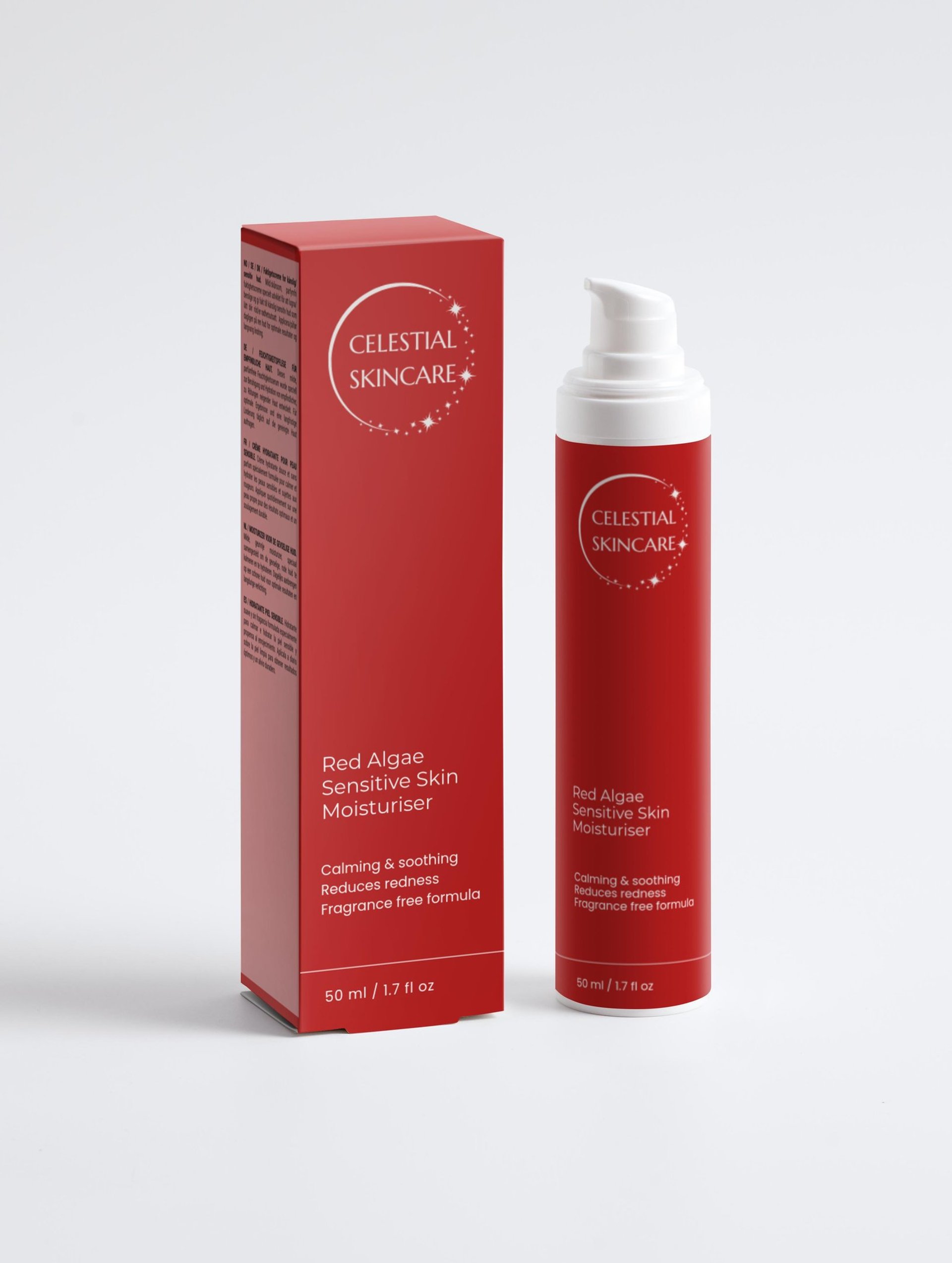
Red Algae in Skincare - The Anti-Aging Ingredient You’ve Never Tried
3 min read
In the ever-evolving world of skincare, ingredients from the ocean's depths continue to make waves. Among these marine treasures, red algae stands out as a particularly gentle yet powerful ally for sensitive and reactive skin. But what exactly is this crimson-colored wonder, and why is it becoming a go-to ingredient for those seeking calm, hydrated skin?
What is Red Algae?
Red algae, scientifically known as Rhodophyta, represents one of the most diverse groups of marine life on our planet. Red Seaweed "Rhodophyta" are an important group of macroalgae that include approximately 7000 species, making them incredibly abundant in our oceans.
What gives red algae their distinctive color? The red color is attributed to phycoerythrin and phycocyanin, the phycobilin pigments in the organism. These pigments not only create their beautiful hue but also contribute to their powerful biological properties.
Where Can Red Algae Be Found?
Red algae are primarily found in Europe (Atlantic Ocean, English Channel, North Sea). However, different species of red algae thrive in various marine environments worldwide, from shallow coastal waters to deeper ocean floors. Their ability to photosynthesize at greater depths than other algae types makes them particularly hardy and nutrient-dense.
The harvesting of red algae for skincare applications is typically done sustainably, ensuring that these marine ecosystems remain balanced while providing us with their beneficial compounds.
The Nutritional Profile - What Does Red Algae Contain?
They are a rich source of structurally diverse bioactive constituents, including protein, sulfated polysaccharides, pigments, polyunsaturated fatty acids, and essential minerals. The key components that make red algae particularly valuable for skincare include:
Polysaccharides: These complex carbohydrates are perhaps the most important component for skin health. They form the foundation of red algae's hydrating and barrier-supporting properties.
Trace Minerals: Red algae naturally concentrate minerals from seawater, including magnesium, calcium, and potassium, which support cellular function and skin barrier health.
Phycobilin Pigments: The characteristic red pigments (phycoerythrin and phycocyanin) possess antioxidant properties that help protect skin from environmental stressors.
Amino Acids: These building blocks of proteins support skin repair and regeneration processes.
How Red Algae Benefits the Skin
The scientific literature reveals several compelling reasons why red algae has earned its place in sensitive skincare formulations:
Deep Hydration and Moisture Retention. Hydrolyzed rhodophycea is a type of red algae that, like most other types used in skin care products, helps improve skin's hydration. The polysaccharides in red algae act as natural humectants, drawing moisture from the environment and helping the skin retain it.
Anti-Inflammatory Properties. Red Algae is an excellent source of biologically active compounds, having several valuable properties including antioxidant, antibacterial, antiviral, and anti-inflammatory effects. This makes it particularly suitable for sensitive skin that's prone to redness and irritation.
Antioxidant Protection. Some algae are reported to have multiple biological activities, with antioxidant (39%) being one of the most significant. Antioxidants also play an important role in protecting your skin from the harmful effects of free radicals.
Skin Barrier Support. The polysaccharides and minerals in red algae help strengthen the skin's natural defense mechanisms. This is particularly important for sensitive skin, which often has a compromised barrier function.
Anti-Aging Benefits. By introducing algae extract into your skincare routine, you can help your body naturally maintain its collagen levels, reducing the onset of fine lines and wrinkles.
How to Use Red Algae in Your Skincare Routine
Red algae is most commonly found in skincare products as hydrolyzed rhodophyceae extract, which means it has been broken down into smaller, more easily absorbed molecules. Here's how to incorporate it effectively:
Morning Routine: Apply red algae-containing moisturizers after cleansing and before sunscreen. The hydrating properties provide an excellent base for makeup application.
Evening Routine: Use red algae products as part of your nighttime moisturizing step, allowing the ingredients to work while your skin repairs itself during sleep.
Frequency: Red algae is gentle enough for daily use, making it ideal for those with sensitive skin who need consistent, non-irritating hydration.
Layering: Red algae works well with other gentle ingredients like aloe vera, glycerin, and hyaluronic acid. Avoid combining with strong actives initially to assess your skin's tolerance.
Application Tips: Gently pat the Red Algae Sensitive Skin Moisturiser into clean skin rather than rubbing, as this helps prevent irritation while maximizing absorption.
Who Should Consider Red Algae?
Red algae is particularly beneficial for:
Those with sensitive or reactive skin
People experiencing redness or inflammation
Anyone seeking gentle, effective hydration
Those with compromised skin barriers
Individuals looking for clean, ocean-derived ingredients
The Science Behind the Soothing
Marine algae are considered to be an abundant sources of bioactive compounds with cosmeceutical potential. The research continues to reveal new applications and benefits, with a great deal of interest has focused on the health-promoting effects of marine bioactive compounds.
What makes red algae particularly effective is its unique combination of hydrating polysaccharides, anti-inflammatory compounds, and barrier-supporting minerals. This trinity of benefits makes it an ideal ingredient for modern skincare formulations designed for sensitive skin.
In conclusion...
Red algae represents a perfect marriage of nature's wisdom and skincare science. Its gentle yet effective properties make it an excellent choice for those seeking to calm, hydrate, and protect their skin without harsh chemicals or potential irritants. As our understanding of marine-derived ingredients continues to grow, red algae stands as a testament to the ocean's incredible ability to nurture and heal our skin.
Whether you're dealing with sensitivity, seeking better hydration, or simply want to incorporate more natural ingredients into your routine, red algae offers a scientifically-backed, ocean-powered solution that your skin will thank you for.